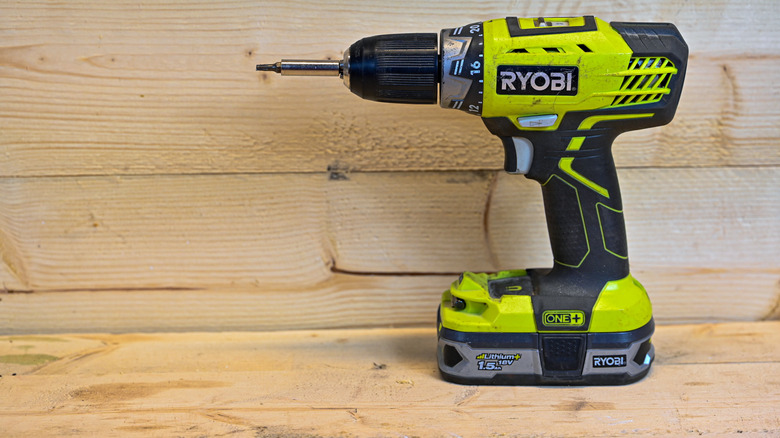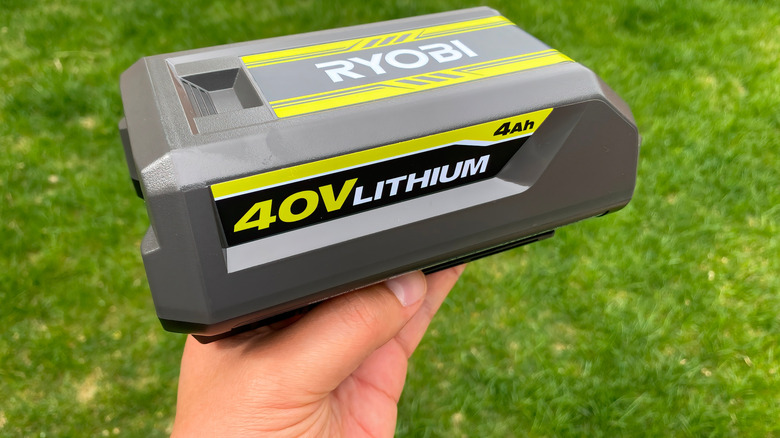What To Do When A Ryobi Battery Gets Stuck In Your Tool
When it comes to cordless tools, Ryobi is a leading brand with seemingly endless product options, from tools that can help whip your lawn into shape to specialty items for odd household projects — it genuinely is a homeowner's dream. One major selling point for this brand is that its batteries are interchangeable, meaning you only need to buy one battery type for dozens of different tools, as long as the voltage is the same. Ryobi prides itself on the easy-to-switch ONE+ battery system, and while various factors may affect how long Ryobi batteries will last, they'll often run between three and five years before needing a replacement. Alas, batteries can occasionally get stuck in the tool in the meantime.
Regardless of the reason, it's important to know the proper (and safe) way to get your Ryobi battery unstuck. If you find yourself with a stuck battery in your Ryobi tool, your first step is to check the battery release mechanism. The battery release might become sticky or gummy from accumulated gunk and debris, making the buttons difficult to depress fully. Make sure you fully squeeze the release button or tabs on the battery pack. For some models, like the 40V batteries, you may need to apply additional pressure to the back to help guide it out. After you've made sure you have a good squeeze on the release button, gently jiggle the battery from side to side, and then pull it straight out (not at an angle).
Other methods to get your Ryobi battery unstuck
For a little extra help dislodging your Ryobi battery, try pushing it further into the tool (gently, of course) for a moment to relieve tension on the locking clips. Ultimately, this may allow them to release fully when you press the button and pull out. Follow the same steps above, and again, make sure you pull the battery out straight to avoid damaging the terminals.
If you've tried focusing on the battery release buttons to remove your Ryobi battery from the tool without success, there are a few additional steps you can take. Some professionals suggest using a block of wood to unstick your Ryobi battery. While pressing the release buttons, hold a block of wood against the flat part of the battery. Using a hammer, gently tap the wood to push the battery out. While this method might work, it's critical to do this softly to avoid breaking the plastic casing or the tool's terminals.
As a tip, if you have used your tool for a while and determine that your Ryobi battery is overheating, don't try to remove it right away. In some instances, the plastic might expand or even fuse to the tool's housing, causing it to be tough to remove. Ryobi users who have experienced this issue report using a plastic putty knife to separate the battery and the tool by prying apart the melted part. If that doesn't work, you can try to repurpose a paint stirrer to help you dislodge it, though this carries a risk of damage. It's important not to use metal or excessive force, since that could harm the battery contacts.

